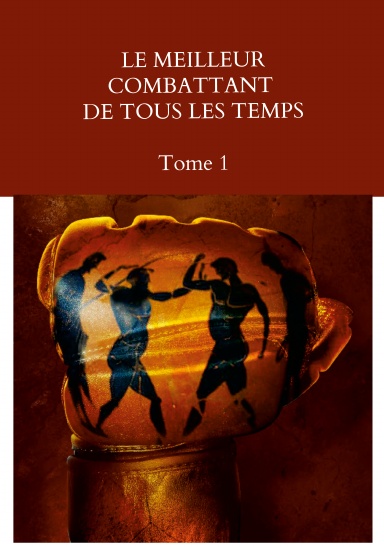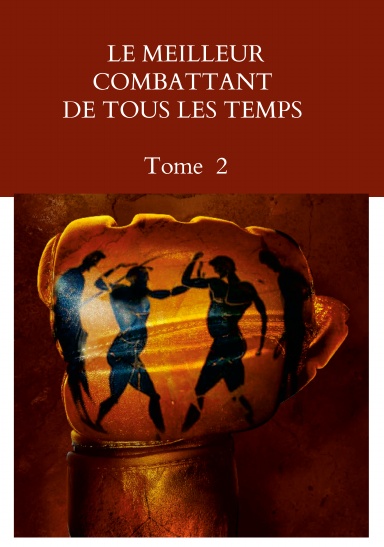|
Présentation |
|
|
Ligue de Croche
Disciplines à la loupe
La Croche en détail
| |
| | |
|
Rencontre avec... |
|
|
  Les compétiteurs Les compétiteurs
  Les professeurs Les professeurs
| |
| | |
|
| Nouvelles | |
|
Mirko Cro-Cop Filipovic revient au K1
- par Jeronimo
le 13/03/2008 @ 08:32
Championnat de France de Sambo - sportif du 16 et 17 février 2008
- par Jeronimo
le 13/03/2008 @ 08:28 Les Champions de France Seniors Masculins 2008 sont : D.Héran,G.Alberti, A.Blanc, T.Dzaguien, J.Kraba, A.Lobbrecht, K.Mosbah, et F.Cazaux
Pour voir la photo et tous les résultats, consultez le site
Lutte : championnats panaméricains
- par Jeronimo
le 13/03/2008 @ 08:19 | 06-03-2008 | Le Championnat Panaméricain senior qui s'est déroulé à Colorado Springs a connu une large participation du fait qu'il servait d'épreuve de qualification pour les Jeux Olympiques de Pékin pour un lutteur et une lutteuse par catégorie et par style. En lutte gréco-romaine, Cuba s'est adjugé sans surprises 4 places, mais devra encore se battre lors des tournois de qualification olympique pour obtrenir les deux places qui lui manquent. Les Etats-Unis et le Canada ont obtenu une place et le Pérou a créé la surprise en se qualifiant en 74kg. En lutte libre, aucun pays n'a pu réaliser un carton plein, mais le Canada s'en est très bien sorti en se qualifiant dans deux catégories. Cuba et les Etats-Unis ont dû se contenter d'une place, tout comme le Pérou, le Mexique et la Colombie dont la performance est à relever. En lutte féminine, le Canada a dominé la compétition en s'octroyant 3 places et en remplissant ainsi son quota alors que pour la première fois de son histoire, le Salvador a qualifié une lutteuse pour les Jeux Olympiques. Tous les résultats sont consultables sur le lien suivant. |
Peter détrône Maskaev
- par Jeronimo
le 12/03/2008 @ 06:26 Le Nigérian Samuel Peter (27 ans 30 victoires dont 23 avant la limite, 1 défaite) s'est emparé du titre WBC des poids lourds en stoppant le Kazak Oleg Maskaev (39 ans, 34 succès dont 26 expéditifs, 6 défaites) au 6ème round, samedi soir à Cancun, au Mexique.

Le combat a été âprement disputé, notamment au troisième round où les deux boxeurs s'éprouvent à tour de rôle. Peter est néanmoins en tête à l'attaque de la sixième reprise. C'est avec une série qu'il conclut le combat, l'arbitre s'interposant après 2:56 pour éviter à Maskaev une plus lourde punition.
Klitschko ? Demain !
 Demain ! Telle fut la réponse de Samuel Peter à la question de savoir s'il était prêt à affronter le "champion émérite" WBC, Vitali Klitschko. "Si on nous demande de nous préparer pour Klitschko, il ferait bien de se montrer." a déclaré Dino Duva, le co-promoteur de Peter associé à Don King. "On aimerait débuter les négociations dès demain." Demain ! Telle fut la réponse de Samuel Peter à la question de savoir s'il était prêt à affronter le "champion émérite" WBC, Vitali Klitschko. "Si on nous demande de nous préparer pour Klitschko, il ferait bien de se montrer." a déclaré Dino Duva, le co-promoteur de Peter associé à Don King. "On aimerait débuter les négociations dès demain."
A propos de sa victoire en six reprises contre Maskaev, Peter a assuré que c'est ce qu'il avait prévu. "J'étais prêt pour ce combat, je l'ai ralenti avec des coups au corps et avec mon jab."
Peter (30-1, 23 KO) a également fait part de son intention d'obtenir une revanche contre le champion du monde unifié Wladimir Klitschko, contre qui il avait perdu en 2005.
"Je n'avais pas pris ce combat au sérieux." a-t-il avoué. "C'est un excellent boxeur, mais à présent, je suis le meilleur poids lourds au monde." Duva acquiesce : "Samuel a franchi une étape ce soir," a dit Duva. "Il redonne son intérêt à la division."11/03/08 - Cancun, Mexique (Matt Richardson, Photo: David Martin ).
Boxe : championnat WBC des lourds
- par Jeronimo
le 07/03/2008 @ 15:57 Pesée Peter - Maskaev
Oleg Maskaev (champion en titre) et Samuel Peter (champion par interim) se sont pesés à Cancun en prévision de leur combat de samedi pour le titre WBC des lourds. A 110,20 kg, Maskaev est à peu de choses près au poids le plus haut de sa carrière et plus de 2,3 kilos plus lourd que lors de son combat contre Rahman en 2006. Peter qui a été pesé à 113,400 kg est au même poids que lors de son dernier combat contre Jameel McCline.

Date possible pour les interclubs de croche (ICC4)
- par Jeronimo
le 06/03/2008 @ 18:16 Avis aux clubs de lutte libre, lutte gréco-romaine, la croche, sambo et grappling : Le président du Comité régional de Lutte de la Réunion a tranché : il nous propose le 13 avril 2008 pour les prochains interclubs de croche (les avant-derneiers de la saison sportive 2007/2008). Reste, pour nous autres organisateurs, à s'assurer que la salle municipale habituelle (33, rue La Croix, à l'Etang Saint-Paul) sera disponible à cette date. Nous vous confirmons ça dès que possible.
| |
| | |
| Ils soutiennent La Croche | |
|
| |
| | |
|
|
Préférences |
|
|
 251 membres
Connectés :
( personne )
| |
| | |
|
Meilleur combattant |
|
|
A l'approche des Jeux Olympiques 2024 à Paris où lutte, escrime,
boxe, judo et taekwondo seront représentés ...
et pour répondre à
l'éternelle question que se posent les fans de sports de combat et
d'arts martiaux, "Qui est le meilleur combattant de tous les temps ?",
ce livre étudie toutes les périodes historiques, de l'Antiquité jusqu'à
nos jours, toutes les grandes compétitions, tous les sports de combat
majeurs sans armes (sports de préhension, sports de percussion, arts
martiaux mixtes) et avec armes, et donne enfin les classements.
Ce
livre de 800 pages (en e-book ou en 2 tomes) est le résultat de
décennies de collecte d'informations et de recherches
historiques.
Lien
pour se procurer la version numérique e-book (année 2024, 800 pages, 7,99
€ )
Ou les deux tomes en papier, couvertures rigides :
- Tome
1 (année 2024, 461 pages, 33,99€ )
- Tome
2 (année 2024, 348 pages, 28,98 € )
  | |
| | |
|